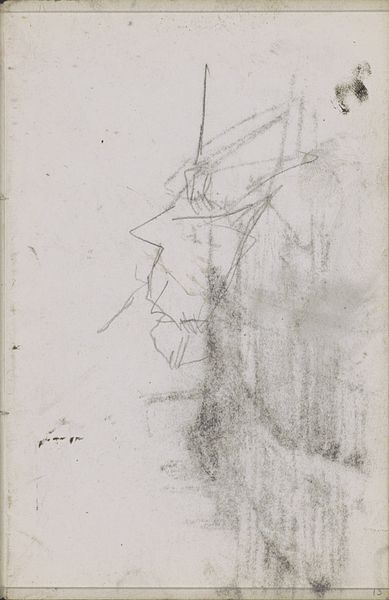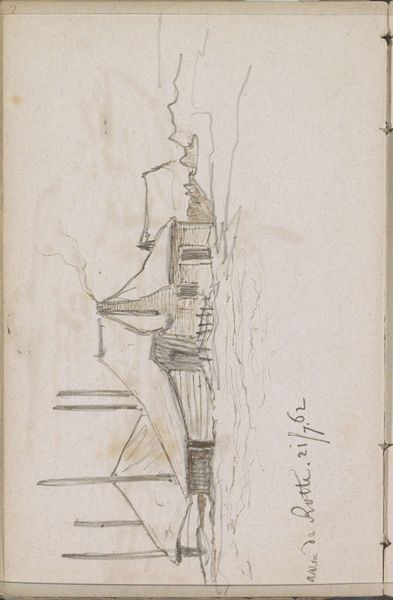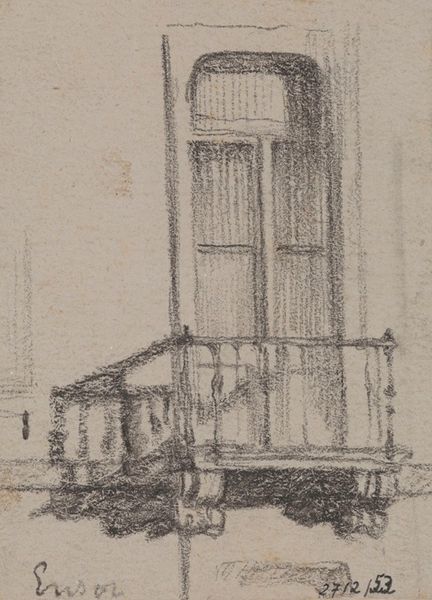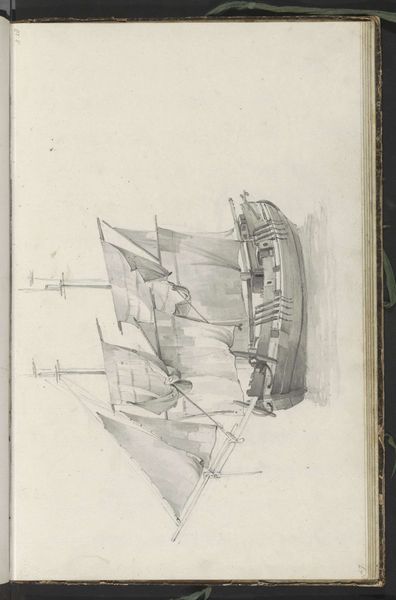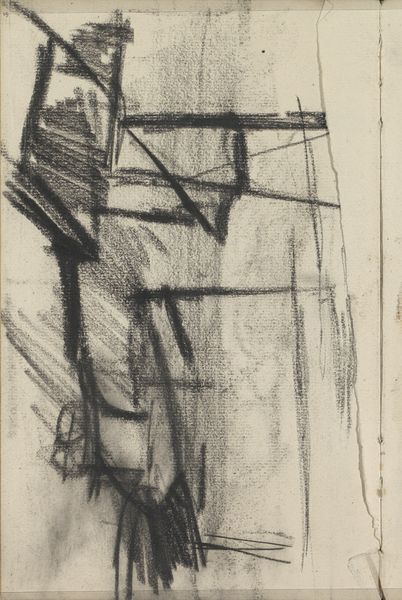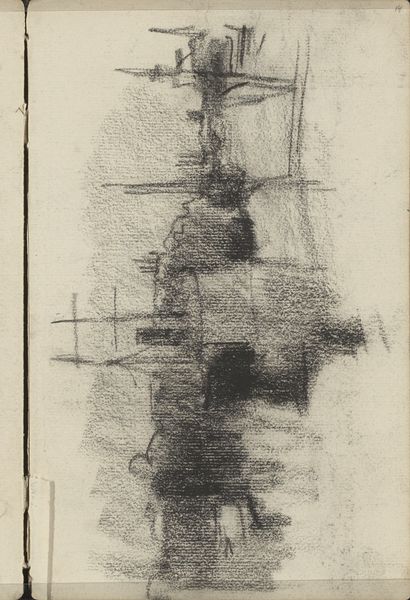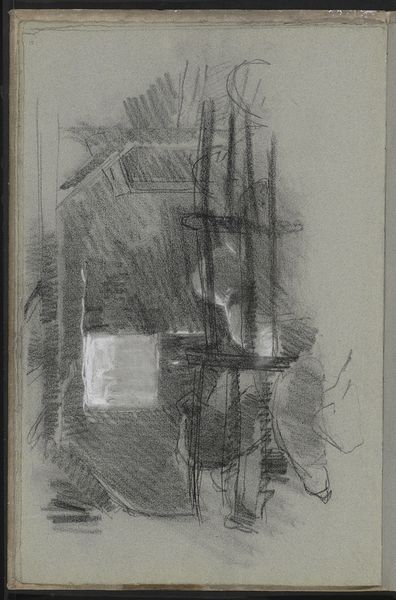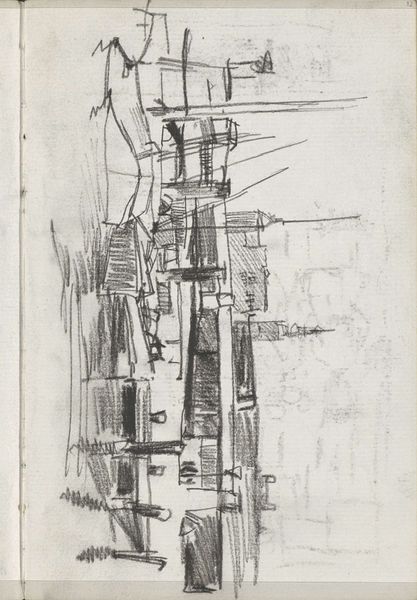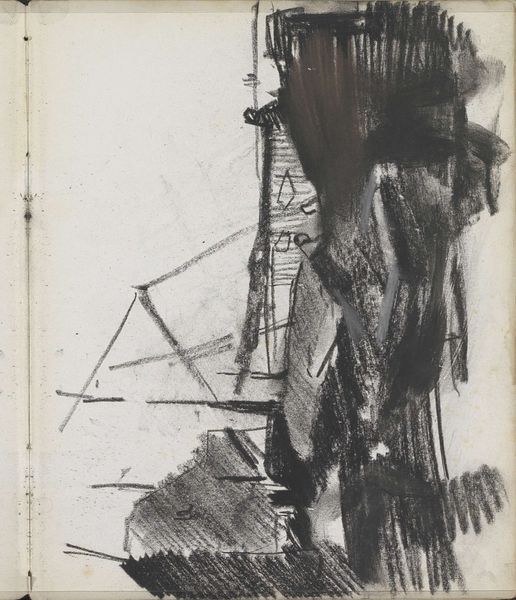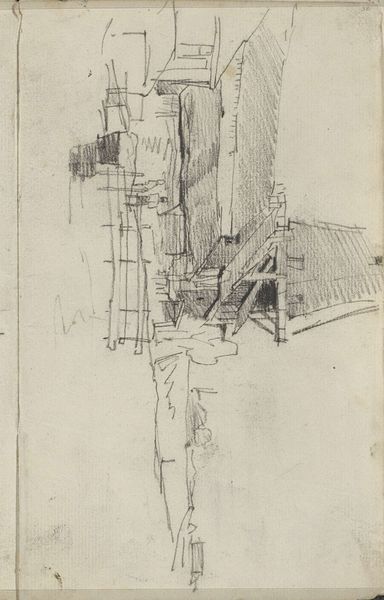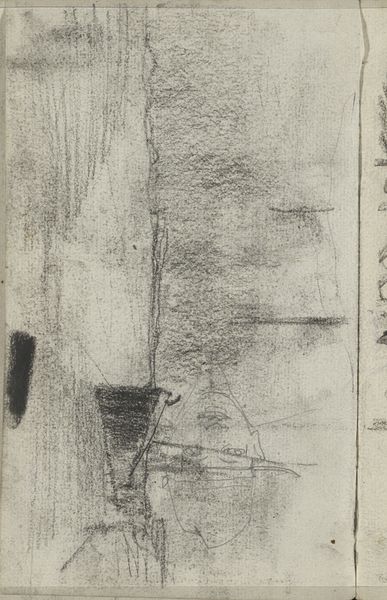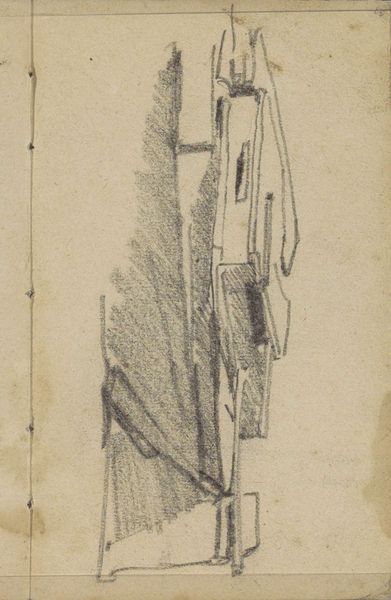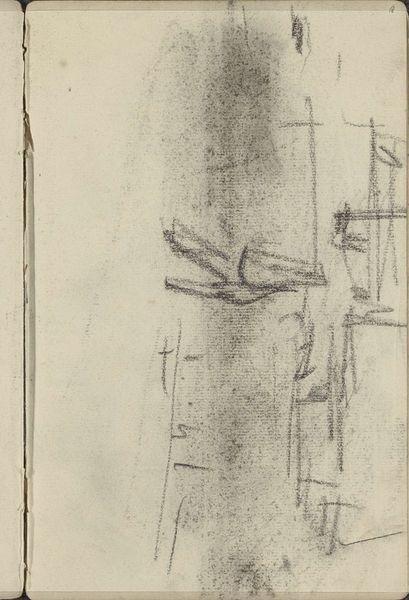
drawing, graphite
#
drawing
#
amateur sketch
#
light pencil work
#
quirky sketch
#
impressionism
#
sketch book
#
incomplete sketchy
#
personal sketchbook
#
sketchwork
#
pen-ink sketch
#
graphite
#
sketchbook drawing
#
cityscape
#
sketchbook art
Copyright: Rijks Museum: Open Domain
Editor: This graphite drawing is titled "Voorgevel van de Beurs van Zocher te Amsterdam" and was created by George Hendrik Breitner between 1887 and 1889. The rapid strokes create a sense of dynamism, but the unfinished quality also feels somewhat melancholic to me. What do you see in this piece, beyond just the architectural depiction? Curator: Beyond the facade, I see a representation of Amsterdam at a pivotal moment of change, doesn't it strike you? Breitner, known for capturing the gritty realities of city life, sketched the Beurs van Zocher, Amsterdam’s stock exchange, right before it was demolished. This building represented established financial power; its demolition, in a way, cleared the way for a more modern, arguably more ruthless, capitalist structure. It invites reflection. Do you see in the roughness of the sketch a sense of societal disruption or perhaps even resistance? Editor: That's interesting. I hadn't considered the timing of the sketch in relation to the building's demolition. So, the sketch is less about architectural representation and more about capturing a moment of transition and possibly critiquing it? Curator: Precisely! Consider also Breitner’s social circles, many of whom actively questioned societal norms and inequalities. Is it possible that this drawing reflects those concerns, a silent commentary on the shifting power dynamics within Amsterdam? Editor: It does change my perspective. Thinking about it as a social commentary makes it much more compelling than just a study of a building. I initially saw a simple sketch, but now I recognize how deeply intertwined it is with the economic and social history of Amsterdam. Curator: Indeed. This piece reminds us that art can act as a subtle yet potent form of social critique. Editor: I'll definitely look at cityscapes differently now, considering what they represent beyond their literal appearance.
Comments
No comments
Be the first to comment and join the conversation on the ultimate creative platform.
